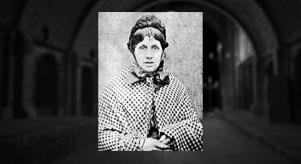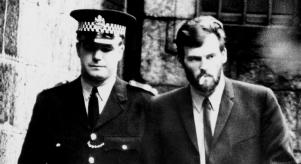
Dundee: Crime Profile
Our seemingly civilised towns and cities conceal histories of twisted crime, often carried out for no rational reason whatsoever. InMurdertown, Katherine Kelly plunges into the past, meeting police officers and relatives of the dead, to present a dark, flipside history of our nation.
In Dundee, she examines the disturbing story of Robbie McIntosh, the apparently ordinary, fresh-faced teenager who was jailed for murdering a woman walking her dog near Dundee's iconic Law landmark. The judge quoted a witness as saying she had been "butchered, and no better description could be applied to the way in which she met her death". Yet, far from being the end of Robbie McIntosh's grim story, this was just the beginning, and even more savagery would follow.
Was Robbie McIntosh just a monstrous aberration for Dundee? Not quite. While the city itself has established itself as a bona fide tourist draw in recent years, even earning a place on the Wall Street Journal's "Hot Destinations" list in 2018, it – like so many major cities – has also been the site of gruesome crimes over the decades.
One took place in the 1980s, and was like something straight out of a horror film. The location was a Victorian villa whose address is now infamous in Dundee: 2 Roseangle. It was here that a local medical student, stepping into the back garden to retrieve a football, glimpsed through a window and saw something from a nightmare: the bodies of the elderly couple who had lived there, battered and mutilated.
The murder scene was described as resembling an 'abattoir'
The killer was a Dundee man named Henry John Gallagher, and he wasn't done yet. Shortly after his blood-splattered exploits in Dundee, he fled to Kent and committed yet another double-murder, this time targeting an elderly monk and his defenceless housekeeper, both of whom were battered so badly that the murder scene was described as resembling an "abattoir".
As one police officer described the Gallagher case, with remarkable understatement, it was all "not normal". Meanwhile, 2 Roseangle, the site of the original murders, has stood as a fabled, notorious place of whispered gossip in Dundee ever since.
Even more infamous than Gallagher is another Dundee native, Robert Mone. The product of a rocky upbringing (his own father would later be jailed for murder and die in prison), Mone carried out one of the most shocking crimes in the city's history in 1967, when he stepped into a classroom of his old school carrying a shotgun.
The unsuspecting girls in the needlework class didn't take it seriously at first. "I just thought it was another teacher and all of a sudden he came in with his gun," one of the girls later said. "We thought it was a joke. Everybody thought it was a joke and we laughed."
Mone – a former serviceman – was soon putting them through a hideous ordeal, sexually assaulting some of the girls before gunning their heroic teacher down as she tried to save the children in her care. He was incarcerated in a psychiatric hospital, but almost a decade later more blood was to be spilled when Mone orchestrated a violent breakout with a fellow inmate.
Mone himself would later describe his own escape as a "nightmare of shattered dreams and grotesque, maniacal butchery". Planned for months, the escape utilised tools they gathered while preparing a theatrical show at the hospital, "under the very noses of the staff who were supposed to be ultra-vigilant", as Mone would recall. On that fateful night, he and his accomplice rounded on one of the nurses, who was hacked to death with an axe. Another, blameless inmate was also killed as the pair scaled the walls and soon confronted police officers patrolling the area.
The escapees murdered one of the officers as they continued their berserk journey. By some miracle, despite menacing more innocent people – including a family they burst in on at home – the body count stopped there, and the pair were recaptured. Incredibly, Mone's accomplice – a literal axe murderer responsible for killing a policeman among others – was released in 2013. Mone himself remains caged.
Dundee is home to a fascinating collection of historical material which was gathered by Victorian chronicler Alexander Crawford Lamb. This archive, known as the Lamb Collection, sheds light on perhaps the most intriguing of all crime cases in the city's history: the murder of Ellen Bury by her husband, William Henry Bury, who was hanged for the crime.
What makes the crime so significant is that Bury is regarded as a highly plausible Jack the Ripper suspect by many Ripperologists. Prior to moving to Dundee with his luckless wife, Bury had lived in London, close to the Ripper's East End stalking ground, and was known for his erratic, violent, abusive behaviour. There are also accounts of his tendency to vanish in the evenings during Jack's murder spree.

His eventual murder of Ellen in Dundee bore some of the Ripper's hallmarks, including strangulation and mutilation of the body by a blade, and there are even contemporary accounts of how the words "Jack Ripper is at the back of this door" were scrawled on his flat in chalk. Was this a crazed confession by Bury? Or perhaps an attempt to communicate the truth by his doomed wife? Whatever the truth, such was the weight of circumstantial evidence that many key figures of the time, including London detectives investigating the Ripper, were convinced Bury was indeed Jack. In which case, the nation's most notorious serial killer met his end in Dundee.
WatchMurdertown Tuesdays at 9pm.






